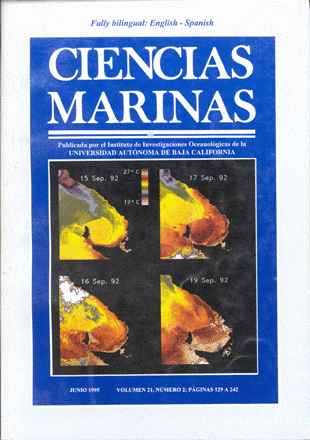Comparative taphonomy and faunal composition of shelly cheniers from northeastern Baja California, Mexico
Main Article Content
Abstract
This report presents the results of comparative taphonomic and faunal analyses of shelly cheniers (mollusk-dominated lag concentrations) from the tidal flats of northeastem Baja California, Mexico. Three generations of cheniers that differ in age and in the duration and complexity of their taphonomic history were sampled for taphonomic and faunal analyses. The three generations, although all dominated by the bivalve mollusk Mulinia coloradoensis, differ signiticantly in their taxonomic composition due to taphonomic and/or biological differences. Taphofacies analysis of 4,334 shells of M. coloradoensis described by nine variables indicated that the shells accumulated in the cheniers are rarely affected by biological processes and moderately affected by physical processes. The shells collected from the chenier surface have poorer preservation than the subsurface ones, indicating that taphonomic degradation is mostly a surface phenomenon. Multivariate analyses discriminate the chenier generations even when the poorly preservable luster variables are excluded from the analysis. Chenier shelly assemblages are taphonomically distinct from assemblages formed in other marine environments. They are characterized by a very low intensity of bioerosion and encrustation.
Downloads
Article Details
This is an open access article distributed under a Creative Commons Attribution 4.0 License, which allows you to share and adapt the work, as long as you give appropriate credit to the original author(s) and the source, provide a link to the Creative Commons license, and indicate if changes were made. Figures, tables and other elements in the article are included in the article’s CC BY 4.0 license, unless otherwise indicated. The journal title is protected by copyrights and not subject to this license. Full license deed can be viewed here.

